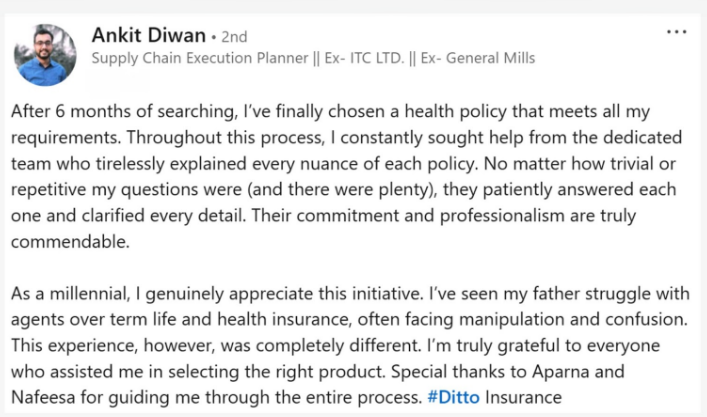| What is Co Payment in Health Insurance? Co-payment in Health Insurance refers to a cost-sharing requirement under which the policyholder or insured person agrees to pay a fixed percentage of the admissible claim amount out of their own pocket. The insurer pays the remaining percentage. |
Imagine this: You’re about to buy health insurance. The agent pitches a ₹5 Lakh cover for just ₹7,000 a year. Then he sweetens the deal—agree to a 20% co-payment clause, and your premium drops by 25% (roughly ₹1,800/year). You think, “Great, I just saved money,” and sign up.
Nine months later, you suffer an accident. The hospital bill comes to ₹2 Lakhs. But since you opted for co-payment, the insurer covers only ₹1.6 Lakhs, and you pay the remaining ₹40,000. Suddenly, that ₹1,800 saving doesn’t look so great.
This is why understanding co payment in health insurance is crucial. In this blog, we’ll explain how it works, the types, factors that affect it, whether it can be waived, and highlight plans with no mandatory co-payment.
What is Co Payment in Health Insurance?
Co payment in health insurance is a cost-sharing provision where the policyholder agrees to pay a fixed percentage of the admissible claim amount out of pocket, while the insurer pays the rest. As per IRDAI-regulated policy wordings, co-payment does not reduce your sum insured, and it is clearly defined as a clause in the insurance terms (IRDAI).
In India, co-payments typically range from 10% to 30%, depending on age, location, or type of treatment. According to IRDAI guidelines, insurers must also clearly disclose any co-payment clauses upfront at the time of purchase, ensuring transparency for policyholders.
While co-payment clauses help bring down your premiums, sometimes by 15% to 30%, they also raise your out-of-pocket responsibility when making claims. Co payment clauses are especially common in policies for senior citizens and persons with pre-existing conditions to balance higher claim risks.
But copayment in health insurance is not just about sharing costs. It also affects how people use health insurance:
- Prevents Minor Claims: Since you must pay a part of the bill, you may avoid filing claims for small expenses like fever or diarrhoea. This keeps the policy active for bigger, more important claims.
- Discourages Expensive Hospitals: With copayment, getting admitted to a premium hospital means paying more from your own pocket. So policyholders often choose reasonably priced hospitals to reduce their share of the bill.
In short, co-payment helps insurers manage risk, keeps premiums lower, and promotes mindful use of health insurance but it can also mean higher out-of-pocket costs if the percentage is high or treatments are expensive.
Not sure which riders you actually need? Talk to Ditto’s expert advisors today and get unbiased, personalised guidance - absolutely free.
What Affects Co Payment in Health Insurance?
Copayment in health insurance can vary depending on the policy and circumstances. Understanding the types of co-pay and the factors that influence copayment helps you anticipate your out-of-pocket costs.
1. Age-Based Co-Pay
Some policies apply mandatory co-payment based on the insured person’s age, typically for senior citizens, due to higher medical risks.
- Examples:
- Star Health Comprehensive Plan: mandatory 10% co-pay every claim, if you bought this policy after you turned 61.
- Aditya Birla Activ Care Premier: 10% mandatory co-pay for seniors aged 55+.
2. Hospital Network
If treatment is sought at hospitals outside the insurer's network, a copayment may apply, whereas cashless claims at network hospitals usually do not require any co-payment.
- Example:
- Under the Care Supreme plan, the optional Smart Select benefit allows you to enjoy a reduced premium, but if you take treatment at hospitals outside the specified Annexure III network list, a 20% co-payment will apply on each claim; however, no such co-payment is applicable if you avail treatment at the listed network hospitals. For more details, refer to the Policy Wording (page 36)
- Similarly, the Smart Network cover under Star Health Super Star plan gives you a 15% discount on premiums if you take treatment only in Star Health’s listed hospitals. But if you get treated outside this network, a 15% co-payment applies on every claim (except accidents), over and above any other co-pay in the policy. For more details, refer to the policy wording (page 12)
3. Medical Condition / High-Cost Treatment
Certain expensive procedures, international treatments, or pre-existing conditions may attract a copayment.
- Example: Niva Bupa Aspire’s Borderless add-on may impose an optional co-pay on high-cost overseas claims.
4. OPD-Based Co-Pay
Some plans extend co-pay clauses to outpatient consultations, diagnostics, or medicines.
- Example: Niva Bupa Aspire Titanium+’s WellConsult OPD benefit: flat 20% co-pay on reimbursements for consultations, prescribed diagnostics, and pharmacy bills (no co-pay for cashless network use).
5. Location-Based / Zonal Co-Pay
Medical costs vary by city; insurers may charge a higher copayment for treatments in metropolitan or high-cost zones.
- Example: Tata AIG Health Supercharge has a zone-based copay where India is divided into Zone A (Mumbai, Delhi, Ahmedabad, etc.), Zone B (Bengaluru, Chennai, Kolkata, etc.), and Zone C (rest of India). If you live in a lower-cost zone but get treated in a higher one, a copayment will apply on your claim.
- Even Bajaj Allianz Health Guard Silver Plan has a similar zone-based copayment clause.
6. Compulsion-Based Co-Pay
- Mandatory Co-Payment: Policyholder must pay a specified percentage. Often applies for senior citizens, pre-existing conditions, or high-cost treatments.
- Example: Care Freedom Plan for people with severe PEDs (usually recommended only as a last resort when better options are not available). Has a mandatory co-payment of 20% for insured persons up to 70 years and 30% for those above 70 years.
- Voluntary Co-Payment: The policyholder chooses to pay a portion of the claim as a copayment in health insurance to reduce premiums.
- Example: ICICI Elevate allows choosing a co-pay of 10–50% in exchange for premium discounts; similar options exist in TATA AIG and Bajaj Allianz Health Guard plans.
7. Other Influencing Factors
- Sub-limits: Some policies put limits on certain treatments or room rent. If your hospital bill exceeds the set limit, the extra amount becomes your responsibility, effectively acting as a copayment in health insurance.
Example: In the New India Assurance Yuva Bharat Health Platinum Policy, the room rent sub-limit is set to a Single AC room. If you opt for a higher category like Deluxe AC room, you must pay the difference in room rent and a proportionate copayment on other hospital expenses. This extra amount you pay acts as a co-payment due to exceeding the sub-limit. - Deductibles: A deductible is an amount you must pay out-of-pocket before the insurance company starts paying for your medical expenses. It is different from a co-payment.
For instance, if your policy has a ₹20,000 deductible, you are responsible for the first ₹20,000 of your medical bills for the year. After you meet the deductible, the co-payment clause might then take effect for the remaining costs.
Note: If you have a choice between a deductible (amount-based) and a co payment (percentage-based), we recommend choosing the deductible. That way, you know exactly how much you will spend from your pocket, instead of paying an open-ended percentage of every claim.
Read more here to understand what a deductible in health insurance is and how it differs from co-payment. - Type of Illness: Chronic or high-cost illnesses may attract higher co-pays if it's a pre-existing condition.
- Policy Terms: Whether co-pay is mandatory, voluntary, or waivable with additional premiums affects the final amount payable as a copayment in health insurance.
In short, co-pay amounts are determined by a combination of your age, hospital choice, medical condition, treatment location, type of illness, and specific policy terms. Knowing these factors helps you select a plan that minimizes out-of-pocket costs while keeping premiums manageable.
Is There a Way to Waive Off Co Payment in Health Insurance?
Plans with mandatory co-payments often offer add-ons or riders to reduce or waive the co-pay. For example, the Care Senior Citizen Plan, Reliance Health Gain, and Reliance Health Infinity policies provide optional co-pay waivers for senior citizens upon payment of an additional premium.
Plans with mandatory co-payments often offer add-ons or riders to reduce or waive the co-pay. For example, the Care Senior Citizen Plan, Reliance Health Gain, and Reliance Health Infinity policies provide optional co-pay waivers for senior citizens upon payment of an additional premium.
Health Insurance Plans with No Mandatory Co-Payment
| Before we jump into the list, here’s how we decide what “best” means. At Ditto, every plan goes through our six-point evaluation framework. This framework is why we’re comfortable using the word “best.” It doesn’t mean these are the only good plans, but that they stand out after being scored across all six pillars. You can learn more about how we evaluate the plans here. |
The five policies we’ve highlighted below stand out because they come with no mandatory copayment in health insurance. What makes them even more attractive is that they all share three essential features: no co-payment, no room rent restrictions, and no disease-wise sub-limits, ensuring complete coverage without hidden caps or cost-sharing.
Beyond this, they also offer generous pre- and post-hospitalization coverage, unlimited restoration benefits, and attractive bonuses that enhance value over time. On top of this, we’ve factored in the insurer’s claim settlement ratio, customer service quality, and overall market performance, making these our top recommendations for 2025.
1. HDFC Optima Secure
Stands out for its Plus benefit, which boosts your sum insured by 50% each year (capped at 100%). It also doubles your cover from day one and offers unlimited restoration up to 100% (via an add-on). Pre- and post-hospitalization (60 & 180 days) and day-care procedures are fully covered.
2. Care Supreme
Highlights include a generous cumulative bonus (50% per year, up to 100%) and wellness discounts of up to 30% on renewal premiums. This helps reduce long-term costs. Unlimited restoration and wide hospitalization coverage make it a strong, cost-efficient option. Pre- and post-hospitalization (60 & 180 days) and day-care treatments are included.
3. Aditya Birla Activ One Max
Offers one of the most rewarding bonuses: coverage can grow up to 500% (max ₹3 Cr). Added benefits include pre-hospitalization (90 days) and post-hospitalization (180 days) expenses, annual health checkups, AYUSH treatment cover, consumables coverage, and domiciliary hospitalization.
4. Niva Bupa Aspire Titanium +
Known for its unique “unused cover carry-forward” bonus Booster+, which can grow your coverage up to 4–11x of the base sum insured (depending on age). It covers pre- and post-hospitalization (60 & 180 days), day-care procedures, domiciliary hospitalization and offers free health checkups. Also known for its comprehensive maternity and newborn coverage.
5. ICICI Lombard Elevate
Designed to stay future-proof, with features like the Power Booster (100% annual sum insured increase) and Inflation Protector (to counter rising medical costs). It covers pre-hospitalization (90 days) and post-hospitalization (180 days), along with day-care treatments for minor procedures. Also includes domiciliary treatment and wide hospitalization coverage.
Why Approach Ditto for Your Health Insurance Plan?
At Ditto, we’ve assisted over 7,00,000 customers with choosing the right insurance policy. Here’s a look at why customers like Ankit below love us:

✅No-Spam & No Salesmen
✅Rated 4.9/5 on Google Reviews by 15,000+ happy customers
✅Backed by Zerodha
✅Dedicated Claim Support Team
✅100% Free Consultation
You can book a FREE consultation. Slots are running out, so make sure you book a call now!
Ditto’s Take on Co-Payment in Health Insurance
We generally recommend avoiding co-payments in health insurance whenever possible. Co-payments can significantly increase your out-of-pocket expenditure, especially during major hospitalizations or expensive treatments. Even if the policy covers a large sum, a high co-pay can reduce the practical effectiveness of your health insurance, because you’re still responsible for a portion of the costs each time you make a claim.
However, there are situations where copayment in health insurance is mandatory or unavoidable. This usually happens for senior citizens or individuals with severe pre-existing conditions. In such cases, opting for a policy with co-pay is still better than having no coverage at all. From that perspective, it allows you to share part of the treatment cost while still protecting yourself from catastrophic medical expenses.
If you’ve been tempted by lower premiums but worried about hidden co-pay costs, let Ditto help you understand the trade-offs and pick a plan that won’t hurt you later.
Book a free call with our experts and get unbiased advice.
Last updated on:










